- Undergraduate
Bachelor's Degrees
Bachelor of ArtsBachelor of EngineeringDual-Degree ProgramUndergraduate AdmissionsUndergraduate Experience
- Graduate
Graduate Experience
- Research
- Entrepreneurship
- Community
- About
-
Search
Research Quick Takes

Jun 06, 2024
Oral Retractor for Robotic Surgery
PhD researcher Yuan Shi, alum Xiaotian Wu '14 Th'19, Professor Ryan Halter, and Adjunct Professor Joseph Paydarfar co-authored "An Imaging-Compatible Oral Retractor System for Transoral Robotic Surgery," published in Annals of Biomedical Engineering. "This device enables artifact-free imaging, which makes intra-operative image guidance possible," said Shi. "We are getting ready to use this novel retractor system in a clinical study at DHMC."

May 30, 2024
Best Innovation Award
Professor Vikrant Vaze received the "Best Innovation" award at the Airline Group of the International Federation of Operational Research Societies' (AGIFORS) 2024 Crew Management Study Group Meeting in Modena, Italy. Vaze earned the award with a technical presentation titled "Integrated Crew Recovery Using Optimization and Machine Learning." Said Vaze, "This research combines interpretable machine learning with optimization to obtain high-quality airline recovery solutions rapidly and transparently."

May 30, 2024
Promising Material Properties
PhD student Weiru Chen, Research Associate Yihuang Xiong, and Professor Geoffroy Hautier co-authored "The Defects Genome of Janus Transition Metal Dichalcogenides" published in Advanced Materials. "This work combines advanced characterization techniques and modeling to precisely identify, at the atomistic scale, the defects in an important 'Janus' 2D material," says Hautier. "This is an important step toward better control and understanding of this technologically promising material."

May 23, 2024
Understanding Glacier Sliding
Professor Colin Meyer and Luce Fellow Julia Bellamy Th'23 co-authored "Subtemperate regelation exhibits power-law premelting," selected for the cover of Proceedings of the Royal Society A. Meyer and Bellamy worked with collaborator Alan Rempel (Oregon) on wire regelation, or cold ice, which is important for glacier motion as they slide over sediments and bedrock. "We developed a model for the cold data and found excellent agreement between a power-law model and the laboratory data. These results advance our understanding of the role of temperature in glacier sliding by providing a link between the water, temperature, and friction," he said.
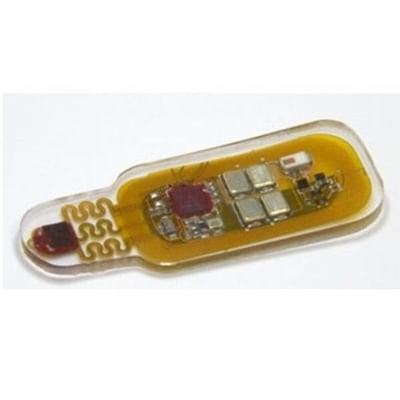
May 16, 2024
Unobtrusive Implantable Device
Professor Wei Ouyang's recent article in Neuron, entitled "An implantable device for wireless monitoring of diverse physio-behavioral characteristics in freely behaving small animals and interacting groups," was featured as a Science Highlight by the National Institute of Biomedical Imaging and Bioengineering (NIBIB). "This work reports a wireless implant that captures a diverse array of previously inaccessible physiological data taken during various behavioral tests, which has the potential to unlock numerous avenues of research such as the effects of brain disorders and treatments on sleep," says Ouyang.
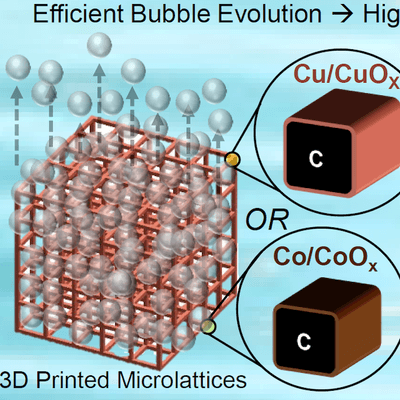
May 09, 2024
Efficient Hydrogen Production
Research Associate Anand Tiwari, PhD student Saifur Rahman, and Professor Will Scheideler co-authored "3D Printed Microlattices of Transition Metal/Metal Oxides for Highly Stable and Efficient Water Splitting" published in Advanced Materials Technologies. The paper presents a novel 3D printing method to create low-cost and efficient electrodes for electrocatalytic hydrogen production. "The resulting materials have shown exceptional durability and electrocatalytic activity, making them promising for large-scale water splitting and sustainable hydrogen fuel production," said Rahman
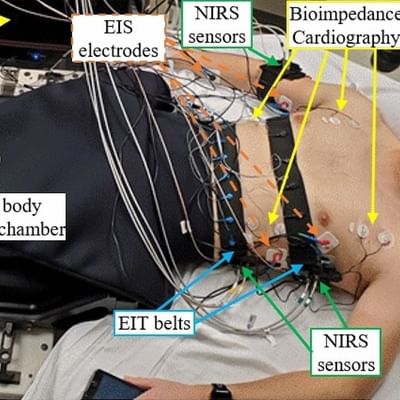
May 02, 2024
EIT for Early Bleed Detection
PhD students Spencer Bertsch Th'19 and Navid Rashedi, alum Yifei Sun Th'22, and Professors Ethan Murphy (first author), Jonathan Elliott, Ryan Halter, and Vikrant Vaze—along with DHMC and Mayo Clinic researchers—co-authored "Non-invasive biomarkers for detecting progression toward hypovolemic cardiovascular instability in a lower body negative pressure model" published in Scientific Reports. The paper summarizes how electrical impedance tomography (EIT) can be used as a novel marker for early bleed detection.

Apr 25, 2024
Guarini 2024 Best Poster Award
PhD student Huan Zhao won the best poster award at Guarini's 2024 Graduate Student Poster Session. Titled "Additively Manufactured Metamaterial using Piezoceramic-Polymer Composite," the poster presented an innovative way to fabricate piezoelectric composites with improved mechanical, thermal, and electrical performance. This research—part of Yan Li's Group and supported by NASA—addresses the need for damage monitoring and process control for future in-space manufacturing.

Apr 18, 2024
Liquid Metal Wires for Wearable Electronics
PhD students Saifur Rahman and Simon Agnew '22, Research Associate Anand Tiwari, and Professor Will Scheideler co-authored "3D Woven Liquid Metals for Radio-Frequency Stretchable Circuits" published in Advanced Materials Technologies. "We've developed a new way to make better, more comfortable wearable electronics. The key is a special type of interwoven wire made from liquid metal that can stretch and bend without losing its ability to transmit signals."

Apr 04, 2024
Evolving Ontologies
Professor Eugene Santos co-authored "Bayesian-knowledge driven ontologies: A framework for fusion of semantic knowledge under uncertainty and incompleteness" published in PLOS ONE. The paper describes how to fuse multiple conflicting ontologies into a single knowledge base. "Biomedicine's rapid advancement is inundating us with new words, labels, and concepts that can be duplicative or even contradictory," says Santos.
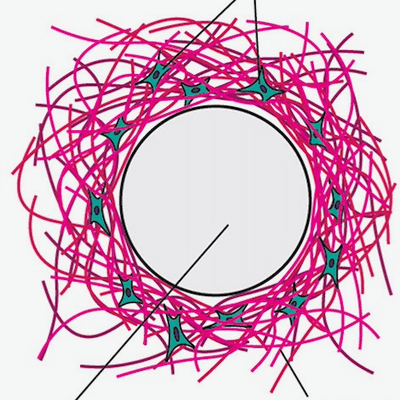
Mar 28, 2024
Interface Design for Bioelectronic Implants
Professor Alex Boys co-authored "Bioelectronic interfacial matching for superior implant design" published in Cell Reports Physical Science, including discussion of the relevance of different mechanical and electronic factors. "Interface design is an important aspect for any material that is implanted into the body," says Boys, "and we wanted to provide a framework for researchers who work on bioelectronics to think about this important issue."
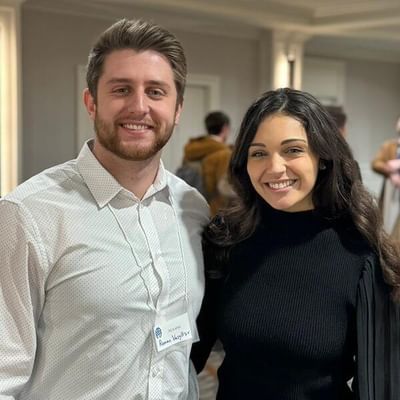
Mar 28, 2024
Grad Students Shine at NEAAPM
PhD candidates Roman Vasyltsiv and Savannah Decker—both in the Optics in Medicine labs and the Medical Physics Education Program—tied for first place in the early investigator competition at the New England Chapter of the American Association of Physics in Medicine (NEAAPM) meeting in Quincy, Mass. Savannah presented "Improving Cherenkov Dosimetry via Quantitative Skin Tone Analysis," and Roman presented "Fast Imaging of a Novel Conformal Scintilator Mesh for 2D In VivoValidation During UHDR PBS Proton Therapy."
